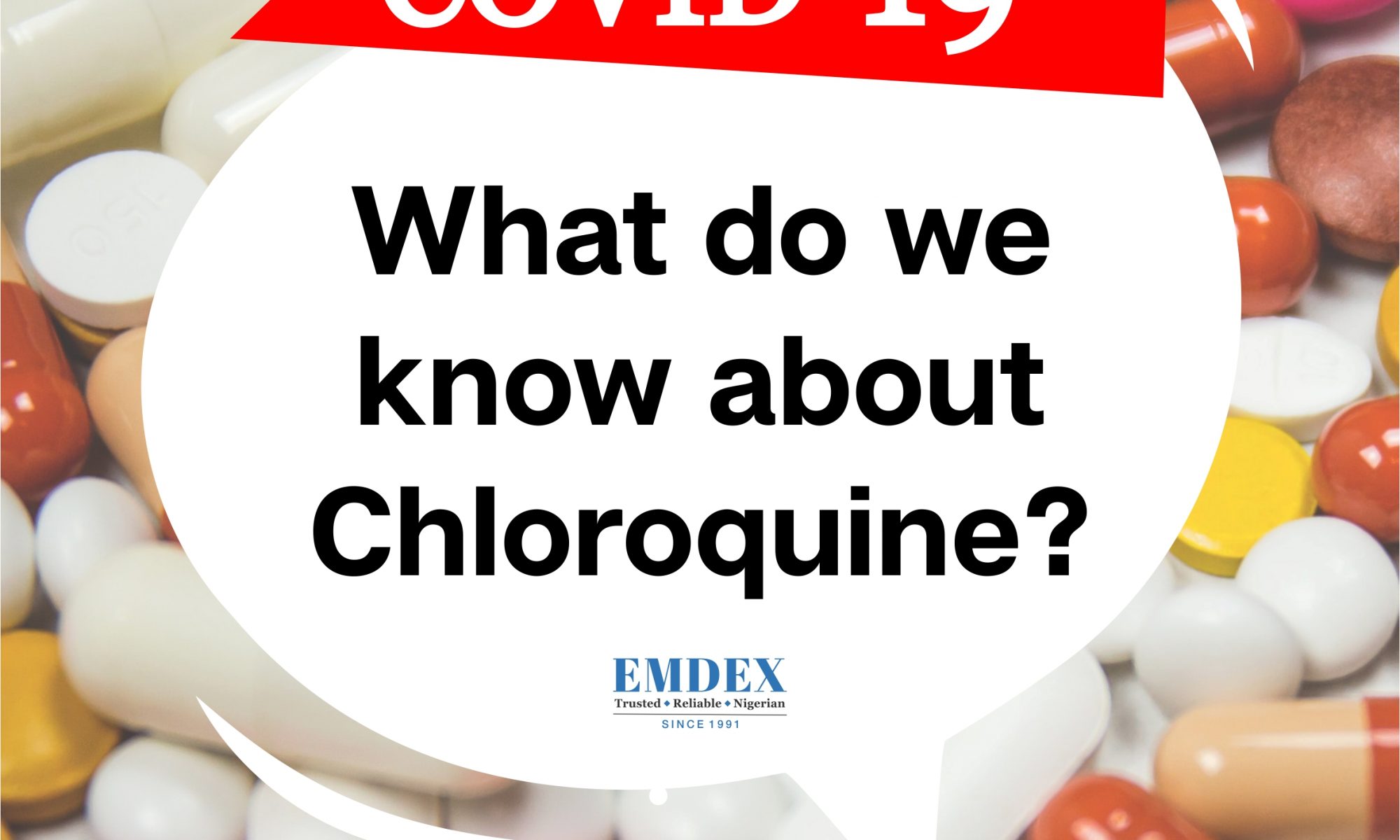Contributed by: Anuolu Bank-Oni, PharmD, CDE, BCGP
A novel coronavirus, identified as severe acute respiratory syndrome coronavirus 2 (SARS-CoV-2), developed in December 2019. The virus causes coronavirus disease-2019 (COVID-19) and initial cases are thought to have originated in a seafood market in Wuhan, China. Since then, SARS-CoV-2 has spread rapidly throughout the world leaving chaos in its wake.
SARS-CoV-2 is a single, positive-stranded RNA virus and primarily causes respiratory infections in humans. The most common symptoms are fever, dry cough, fatigue, and difficulty breathing. SARS-CoV-2 has been found to be closely related to the virus responsible for the 2003 epidemic (SARS-CoV-1).
Although there is currently no proven treatment, certain medications are being investigated for efficacy. Chloroquine, a drug used to treat malaria and autoimmune diseases, has shown promise. After oral administration, chloroquine is extensively distributed in the body, including the lungs – an important feature when treating a respiratory infection.
Chloroquine has antiviral activity and the following are the hypothesized mechanisms of action in the treatment of SARS-CoV-2:
- Inhibits the fusion of viral and endosomal membranes by increasing endosomal pH, thereby preventing viral replication.
- Inhibits activation of the p38 mitogen-activated protein kinase, thereby preventing viral replication.
- Interferes with proteolytic processing of the M protein, which is essential for viral assembly and budding.
- Reduces the production of proinflammatory cytokines and/or activates antiviral CD8+ T-cells.
A recent letter written in the Cell Research Journal by Wang et al. noted that chloroquine was effective in reducing viral replication in vitro. Also, preliminary Chinese reports indicate that compared to control groups, patients diagnosed with COVID-19 who received chloroquine experienced a faster reduction of fever and improvement of lung computed tomography scans. In short, these patients recovered quicker than those in the control group. Last month, a panel of scientists in China published a set of recommendations titled, “Guidelines for the Prevention, Diagnosis, and Treatment of Novel Coronavirus-induced Pneumonia”. In the guidelines, the scientists recommend treating COVID-19 with oral chloroquine phosphate 500 mg (300 mg of chloroquine base) twice daily for a maximum of 10 days. It is important to note that this recommendation was deduced from preliminary outcomes of clinical trials.
Available evidence of the therapeutic benefit of chloroquine in patients with COVID-19 is insufficient, but several clinical trials are currently investigating the use of this old drug in a new way.
The National Agency for Food and Drug Administration and Control (NAFDAC) has just approved the production of chloroquine for clinical trials for COVID-19. In a statement at NAFDAC headquarters on Friday, March 20, 2020, the Director-General of the agency emphasized chloroquine is not approved for the treatment of COVID-19.
References:
- Sah, R., et al. 2020. Complete genome sequence of a 2019 novel coronavirus (SARS-CoV-2) strain isolated in Nepal. Microbiology Resource Announcements, 9(11).
- Wang, M., et al. 2020. Remdesivir and chloroquine effectively inhibit the recently emerged novel coronavirus (2019-nCoV) in vitro. Cell Research, 30(3), pp.269-271.
- Cortegiani, A., et al. 2020. A systematic review on the efficacy and safety of chloroquine for the treatment of COVID-19. Journal of Critical Care.
- Devaux, C., et al. 2020. New insights on the antiviral effects of chloroquine against coronavirus: what to expect for COVID-19? International Journal of Antimicrobial Agents, p.105938.
- Dong, L., et al. 2020. Discovering drugs to treat coronavirus disease 2019 (COVID-19). Drug Discoveries & Therapeutics, 14(1), pp.58-60

